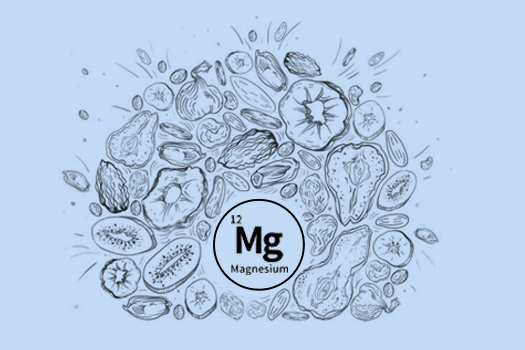Have you ever taken “too much” magnesium? Do you remember what happened when you did? It probably wasn’t pleasant. It might have even been the reason you stopped, which is a shame because Magnesium is one of the most under consumed nutrients in our diet. Magnesium comes in many forms and not all of them are well tolerated, even at smaller doses. When you couple this with the fact that we are fighting an uphill battle every day to increase our Magnesium status, the type of Magnesium you supplement with can make all the difference in achieving your health goals. Magnesium is a critical nutrient that is used throughout the body, from helping our metabolism function to calming our muscles after exercise. The established amount of Magnesium we need every day was even recently increased from 400mg to 420mg a day, even though a high percentage of individuals already failed to get enough. In times past, it is estimated that humans consumed an average of 500-600mg every day through diet and natural water sources. Nowadays soil conditions, over processed food, and filtered water have led to 75% of us not being able to consume enough to maintain Magnesium status and slowly leads to a loss of Magnesium function in the body. Given this reality, Magnesium supplementation has continued to grow, with an estimated 18% of all supplement consumers taking extra Magnesium daily. Seems simple enough, if you need extra just take extra and be done with it, but Magnesium is not without its dangers. If we take the wrong type, or too much of it, then Magnesium supplementation can lead to stomach cramps and diarrhea. Magnesium typically comes in the diet in 2 groups or forms: salt form and chelated or food form. Salt forms of Magnesium often use colorful marketing such as “ionic” or “trace” to describe them, but these are all the same thing on a molecular level. When we consume this form in small amounts, such as dissolved naturally from our drinking water, then there is no issue, and it will contribute to our daily needs. When we consume it in larger supplemental doses, then salt forms such as Magnesium Oxide, Citrate, Malate, Chloride, Sulfate etc ended up dissolving to varying degrees in our
stomach juices or liquids. Once dissolved they begin to be absorbed, however the body can only take up so much before our intestinal lining becomes saturated. At this point the body can no longer absorb more, and the remaining Magnesium grabs onto water and carries it to the colon creating a laxative
effect. This effect is actually the reason the Epsom Salt, otherwise known as Magnesium Sulfate, is prescribed for laxation. While some may desire to add extra Magnesium to the diet in order to increase stool frequency, this laxative effect has the potential to deplete valuable minerals from the diet and negatively affect hydration. It is so well established that this occurs, that the FDA has established an Upper Limit toxicity dose of Magnesium at 350mg making it the only known nutrient that has a Upper Limit lower than its RDA of 420mg. At this dose of salt form Magnesium all will be affected to some degree, and many experience laxation at much smaller doses. This presents a challenge, since the
problem of Magnesium status in the diet remains, yet many would still benefit if it didn’t cause side effects. Thankfully, salt forms are not the only forms available. It is well known that when it comes to absorption, many minerals benefit from being bound to other compounds in food with the most notable
being proteins. When Minerals are bound to proteins, they do not saturate the intestinal lining and therefore do not pull water into the colon, all the while having great absorption. This allows for increased Magnesium status without the risk of creating a laxative effect. Many of these types of Magnesium are available, but the most studied form is Magnesium bound the amino acid Glycine. Magensium Glycinate, also known as BISGlycinate or TRAACS form, is used exclusively in Real Electrolytes to provide an effective dose of 125mg per serving, along with the naturally occurring amounts found in the High Potency Electrolyte Blend juice powders. We chose this dose because this is exactly the right amount to help the most people get their Magnesium intake back in the proper range to meet their needs, as well as efficiently provide this critical nutrient to help enhance hydration and muscle function. Its been said that when it comes to your diet, its not about what you eat, its about what you absorb. In this case we couldn’t agree more. Real Electrolytes from Great Naturally delivers Real Food and High Potencies to help you Find Your Greatness.

